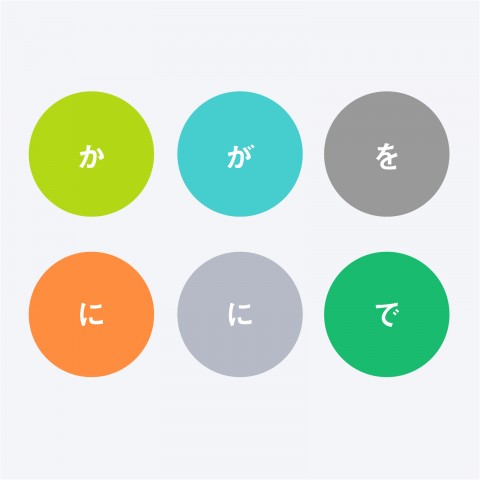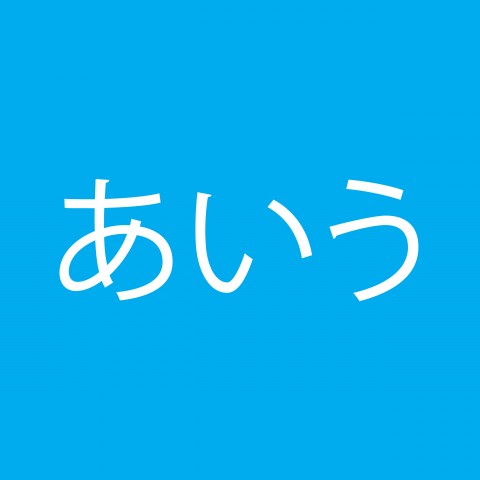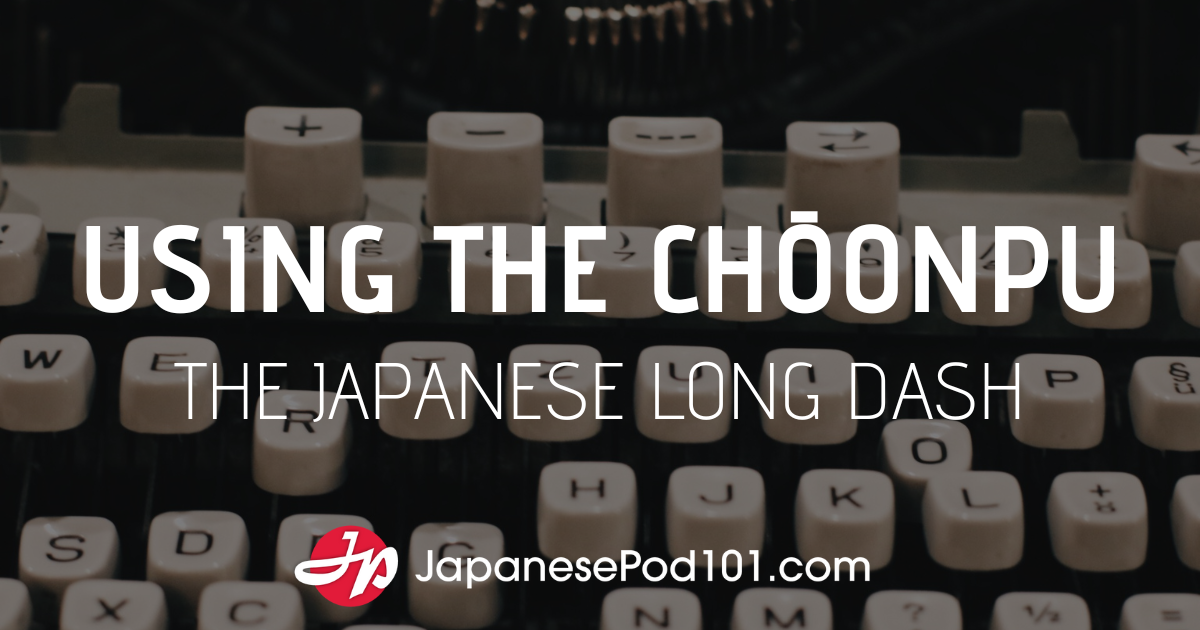When learning a new language, the grammatical part is inevitable. Even if you have a large vocabulary and can communicate well enough with native speakers of that language (which is a great way to practice at first!), you need to know the correct word order and sentence structure to continue improving.
Japanese grammar is totally different from English grammar. However, once you get used to the Japanese sentence structure, it will be much easier for you to make sentences. This is because the Japanese language word order is more flexible than that of English.
In this article, we’ll introduce the basics of Japanese word order, which will help you better understand Japanese sentence structure as a whole. Brush up on your Japanese here at JapanesePod101.com!
 Table of Contents
Table of Contents
- Overview of Word Order in Japanese
- The Basic Word Order of Japanese
- Word Order with Postpositional Phrases
- Word Order with Modifiers
- Asking Questions
- Let’s Practice Making a Sentence in Japanese!
- Conclusion: How JapanesePod101 Can Help You Learn More Japanese
1. Overview of Word Order in Japanese

1. Japanese is SOV
Japanese is an SOV language, which means that the basic word order in a sentence is S (subject) – O (object) – V (verb). English, on the other hand, is an SVO language with the order of S (subject) – V (verb) – O (object).
(S) (O) (V)
Japanese: 私は本を読みます。(Watashi wa hon o yomimasu.)
(S) (V) (O)
English: “I read the book.”
2. Variable/Flexible Sentence Structure
The Japanese sentence structure is flexible:
[1] The subject can be omitted when it’s clear from the context/situation.
[2] The subject and object(s) can be placed in a variable order.
[1]
(S) (O) (V)
(私は)本を読みます。 [(Watashi wa) hon o yomimasu.] = “I read the book.”
The subject 私は (watashi wa) can be omitted.
[2]
(S) (V) (O)
English: “I read the book.”
In English, the subject can’t be omitted and the verb comes before the object.

(S) (O) (V)
Japanese: (私は) 本を読みます。 [(Watashi wa) hon o yomimasu.]
In Japanese, the subject can be omitted and the verb is always at the end of a sentence. The basic word order in Japanese is variable in that the subject can also appear after the object, and the order of the objects (if there are multiple) is flexible.


The postpositional particles are used in a Japanese sentence to modify words.
3. The Distinguishable Features of Word Order in Japanese Sentences
Compared to English, one of the distinguishable features of word order in Japanese is that Japanese has a 述語 (Jyutsugo), grammatically translated as “predicate.”
The predicate is one of the two main parts of a sentence stating something about the subject. While an English predicate can appear in the middle of a sentence, a Japanese 述語 (Jyutsugo) is always placed at the end of a sentence. This applies to both the casual form and the polite form.
Japanese: 私は本を読みます。(Watashi wa hon o yomimasu.) >> 読みます(yomimasu) is the predicate.
English: “I read the book.” >> “read the book” is the predicate.
2. The Basic Word Order of Japanese

1. SOV in Japanese
As we saw in the previous section, the basic sentence structure of Japanese is S (subject) – O (object) – V (verb).
Japanese parts of speech are usually followed by 助詞 (Joshi), or “particles,” that modify the word in front.
The subject is the person or thing that’s being discussed or described in a sentence, and the Japanese subject is usually followed by は (wa) or が (ga), which are 格助詞 (Kaku-Joshi) meaning “case markers” or 係助詞 (Kakari-Joshi) meaning “binding particles.”
The object is usually a noun or pronoun that is acted upon by the subject. A Japanese object is followed by a particle, such as を (o) or に (ni), which are 格助詞 (Kaku-Joshi).
The verb conveys an action (eat, write, move, etc.), an occurrence (happen, change), or a state of being (be, seem, exist). Japanese verbs either end the sentence, or are followed by 丁寧体 (Teinei-tai) such as です (desu) or ます (masu) in the polite form.
| Word Order | SVO : English (subject)-(verb)-(object) |
| Example | “I read the book.” |
| “I am a musician.” | |
| “The book is about music.” |
| SOV : Japanese (subject)-(object)-(verb) | Literal translation following the word order |
| 私は本を読みます。 Watashi wa hon o yomimasu. | I / the book / read. |
| 私は音楽家です。 Watashi wa ongakuka desu. | I / a musician / am. |
| その本は音楽についてです。 Sono hon wa ongaku ni tsuite desu. | The book / the music / about / is. |
2. Flexible Word Order
As we mentioned earlier, in Japanese grammar, word order is pretty flexible. Look at the diagram of the Japanese sentence structure in 1. 2. [2] above; the word order of the subject and object(s) is flexible. Even though the subject usually appears at the beginning of a sentence, the subject can also be placed in the middle or even be omitted.
Let’s take a look at the example.
S (subject) – O (object) – V (verb)
- (私は)明日図書館で友達と本を読みます。
(Watashi wa) ashita toshokan de tomodachi to hon o yomimasu.
(I) (tomorrow) (at the library) (with a friend) (the book) (read).
“I will read the book with a friend at the library tomorrow.”
The subject and object(s) can be placed in a variable order.
For example, the sentence above can also be in the following orders:
(私は)図書館で明日友達と本を読みます。
(Watashi wa) toshokan de ashita tomodachi to hon o yomimasu.
(私は)友達と図書館で明日本を読みます。
(Watashi wa) tomodachi to toshokan de ashita hon o yomimasu.
明日図書館で(私は)友達と本を読みます。
Ashita toshokan de (watashi wa) tomodachi to hon o yomimasu.
3. Word Order with Postpositional Phrases
While English uses prepositions (such as “at,” “on,” and “for”) to express a relationship to another word, Japanese uses postpositional particles, or 助詞 (Joshi). These particles come after the modified noun, verb, adjective, or at the end of a sentence.
There are several types of particles, categorized by function. However, we’ll only introduce the most essential particle: 格助詞 (Kaku-Joshi) or “case maker.”
When there are multiple objects, their order is flexible and variable as mentioned in the previous section.
| Meaning/Function | Reading | Hiragana | Example |
|---|---|---|---|
| Nominative case | -ga | ーが | 彼女が一番です。 Kanojo ga ichi-ban desu. “She is number one.” |
| Location | -de | ーで | ここで食べます。 Koko de tabemasu. “(I) eat here.” |
| Destination | -e | ーへ | 彼は図書館へいきます。 Kare wa toshokan e ikimasu. “He goes to the library.” |
| Dative case / Time | -ni | ーに | Dative: 彼は子供に本をあげました。 Kare wa kodomo ni hon o agemashita. “He gave the kid a book.” Time: 私は5時に出発します。 Watashi wa go-ji ni shuppatsu shimasu. “I depart at five o’clock.” |
| Origin | -kara | ーから | 駅は家から徒歩5分です。 Eki wa ie kara toho go-fun desu. “The station is a five-minute walk from home.” |
| Co-participant | -to | ーと | 彼女は彼と歌います。 Kanojo wa kare to utaimasu. “She sings with him.” |
| Objective case | -o | ーを | 私は本を読みます。 Watashi wa hon o yomimasu. “I read the book.” |
| Possessive case | -no | ーの | これは私のカバンです。 Kore wa watashi no kaban desu. “This is my bag.” |
| End point | -made | ーまで | 彼は駅まで歩きました。 Kare wa eki made arukimashita. “He walked to the station.” |
| Starting point / Comparative | -yori | ーより | Starting point: 会議は9時より行われます。 Kaigi wa ku-ji yori okonawaremasu. “The meeting will be held at nine o’clock.” Comparative: これはあれより安いです。 Kore wa are yori yasui desu. “This is cheaper than that.” |

彼は駅まで歩きました。(Kare wa eki made arukimashita.), “He walked to the station.”
4. Word Order with Modifiers
With the basic Japanese word order rules in mind, let’s see how it works with modifiers to make more complex sentences.
A modifier is a word—such as an adjective, pronoun, or adverb—that expresses something about the word that follows it. Adjectives and pronouns modify nouns; adverbs modify verbs.
Here’s the Japanese word order with modifiers by function.
1. With Adjectives
In Japanese word order, adjectives come in front of nouns to describe them.
- 赤いりんご (akai ringo), “red apple”
- 分厚い本 (buatsui hon), “thick book”
In a sentence with a subject and verb, the format is: S (subject) – O (object) – V (verb).
- 彼は赤いりんごを食べました。(Kare wa akai ringo o tabemashita.), “He ate a red apple.”
- 私は分厚い本を読みます。(Watashi wa buatsui hon o yomimasu.), “I read the thick book.”
To learn more about Japanese adjectives, please visit our page on the Most Common Adjectives.
2. With Possessive Pronouns
Japanese possessive pronouns—such as 私の (watashi no) meaning “my” and 彼の (kare no) meaning “his”—come in front of nouns. The Japanese possessive case is の (-no) which is the postpositional particle marked after a person or thing.
- 私の車 (Watashi no kuruma), “my car”
- 彼女の家 (Kanojo no ie), “her house”
In a sentence with a subject and verb:
- 彼は私の車を使いました。(Kare wa watashi no kuruma o tsukaimashita.), “He used my car.”
- 私は彼女の家へ行きました。(Watashi wa kanojo no ie e ikimashita.), “I went to her house.”
3. With Adverbs
Adverbs modify verbs, adjectives, or other adverbs. Japanese adverbs come in front of the words they modify.
- 静かに話します (shizuka ni hanashimasu), “speak quietly”
- ひどく疲れました (hidoku tsukaremashita), “terribly tired”
In a sentence with a subject and verb:
- 彼女は静かに話します。(Kanojo wa shizuka ni hanashimasu.), “She speaks quietly.”
- 彼女はとても静かに話します。(Kanojo wa totemo shizuka ni hanashimasu.), “She speaks very quietly.”
- 私はひどく疲れました。(Watashi wa hidoku tsukaremashita.), “I got terribly tired.”
For more about Japanese adverbs, please check out our page on Must-Know Adverbs and Phrases for Connecting Thoughts.
4. With Numerals
When numerals modify a noun, they come before that noun. When numerals are used as an object, they come before verbs.
- 一冊の本 (Issatsu no hon), “one book”
- 二つのりんご (Futatsu no ringo), “two apples”
- 5匹います (Go-hiki imasu), “there are five (kinds of animals)”
In a sentence with a subject and verb:
- 私は1冊の本を読みます。(Watashi wa issatsu no hon o yomimasu.), “I read one book.”
- 木から落ちたのは二つのりんごです。(Ki kara ochita no wa futatsu no ringo desu.), “What fell from a tree are two apples.”
- 動物園にパンダが5頭います。(Dōbutsuen ni panda ga go-tō imasu.), “There are five pandas in the zoo.”
There’s a great variety of Japanese counter words which are used when talking about things, actions, or events.
For more about the basics of Japanese numbers, please visit Numbers and Kanji for Numbers and Counters.

Dōbutsuen ni panda ga go-tō imasu. (“There are five pandas in the zoo.”)
5. Asking Questions
Making an interrogative sentence in Japanese is surprisingly easy! It doesn’t involve changing the word order or adding an auxiliary verb to form a question, like in English (e.g. You swim. >> Do you swim?).
In Japanese, you only have to add か (ka), a question marker, to the end of a sentence and pronounce it with a rising intonation.
Polite / Basic Sentence
- 私は本を読みます。(Watashi wa hon o yomimasu.), “I read the book.”
Question: 私は本を読みますか。 (Watashi wa hon o yomimasu ka.), “Do I read the book?”
- これは100円です。(Kore wa hyaku-en desu.), “This is 100 yen.”
Question: これは100円ですか。 (Kore wa hyaku-en desu ka.), “Is this 100 yen?”
- 彼女は肉を食べません。(Kanojo wa niku o tabemasen.), “She doesn’t eat meat.”
Question: 彼女は肉を食べませんか。(Kanojo wa niku o tabemasen ka.), “Doesn’t she eat meat?”
Casual Sentence
In casual and colloquial speech, just change the pronunciation to have a rising intonation at the end of a sentence, without adding か (ka).
- 今日は寒い。(Kyō wa samui.), “Today is cold.”
Question: 今日は寒い? (Kyō wa samui?), “Is today cold?”
- 私に小包が届いた。(Watashi ni kozutsumi ga todoita.), “The parcel was delivered to me.”
Question: 私に小包が届いた? (Watashi ni kozutsumi ga todoita?), “Was the parcel delivered to me?”
- (あなたは)犬が好き。[(Anata wa) inu ga suki.], “You like dogs.”
Question:(あなたは)犬が好き? [(Anata wa) inu ga suki?], “Do you like dogs?”
6. Let’s Practice Making a Sentence in Japanese!
Learning by doing is the best way to master! Now, let’s practice making a Japanese sentence, step by step, with the Japanese word order rules you’ve learned today. If you don’t remember anything, feel free to review the sections above!
Try to translate the following sentences in Japanese.
1. “You went to the library.” : _________________
2. “You went to the library in the morning.” : _________________
3. “You went to the library in the morning at eight o’clock.” : _________________
4. “Did you go to the library in the morning?” : _________________
5. “She ate sushi today.” : _________________
6. “She ate sushi with Mariko today.” : _________________
7. “She ate sushi with Mariko for lunch today.” : _________________
8. “Did she eat sushi with Mariko for lunch today?” :_________________
If you don’t know certain vocabulary words, please check out our lists for the 50 Most Common Verbs and our School Vocabulary.

“Library” in Japanese is 図書館 (toshokan).
[Answers]
1. “You went to the library.”
あなたは図書館へ行きました。(Anata wa toshokan e ikimashita.)
2. “You went to the library in the morning.”
あなたは朝図書館へ行きました。(Anata wa asa toshokan e ikimashita.)
3. “You went to the library in the morning at eight o’clock.”
あなたは朝8時に図書館へ行きました。(Anata wa asa hachi-ji ni toshokan e ikimashita.)
4. “Did you go to the library in the morning?”
あなたは朝図書館へ行きましたか。(Anata wa asa toshokan e ikimashita ka.)
5. “She ate sushi today.”
彼女は今日寿司を食べました。(Kanojo wa kyō sushi o tabemashita.)
6. “She ate sushi with Mariko today.”
彼女は今日まりこと寿司を食べました。(Kanojo wa kyō Mariko to sushi o tabemashita.)
7. “She ate sushi with Mariko for lunch today.”
彼女は今日お昼ご飯にまりこと寿司を食べました。(Kanojo wa kyō o-hirugohan ni Mariko to sushi o tabemashita.)
8. “Did she eat sushi with Mariko for lunch today?” :
彼女は今日まりこと寿司を食べましたか。(Kanojo wa kyō Mariko to sushi o tabemashita ka.)
*The word order of objects can vary when there are many in a sentence.
7. Conclusion: How JapanesePod101 Can Help You Learn More Japanese
In this article, we introduced you to Japanese word order. Now you understand how the Japanese sentence structure works. At first, you might feel confused about the flexibility of Japanese word order, but you’ll find it’s actually a lot easier to make complex sentences once you get used to it!
If you would like to learn more about the Japanese language and practice other useful Japanese phrases for any situation, you’ll find a lot more helpful content on JapanesePod101.com. We provide a variety of free lessons to help you improve your Japanese language skills. Here’s some more information about the basics of Japanese with audio: Top 10 Sentence Patterns for Beginners and Most Useful Pronouns.
And there’s so much more we can offer you! Learn faster and enjoy studying Japanese at JapanesePod101.com!
Before you go, let us know in the comments if you still have questions about Japanese word order. We’d be glad to help.










